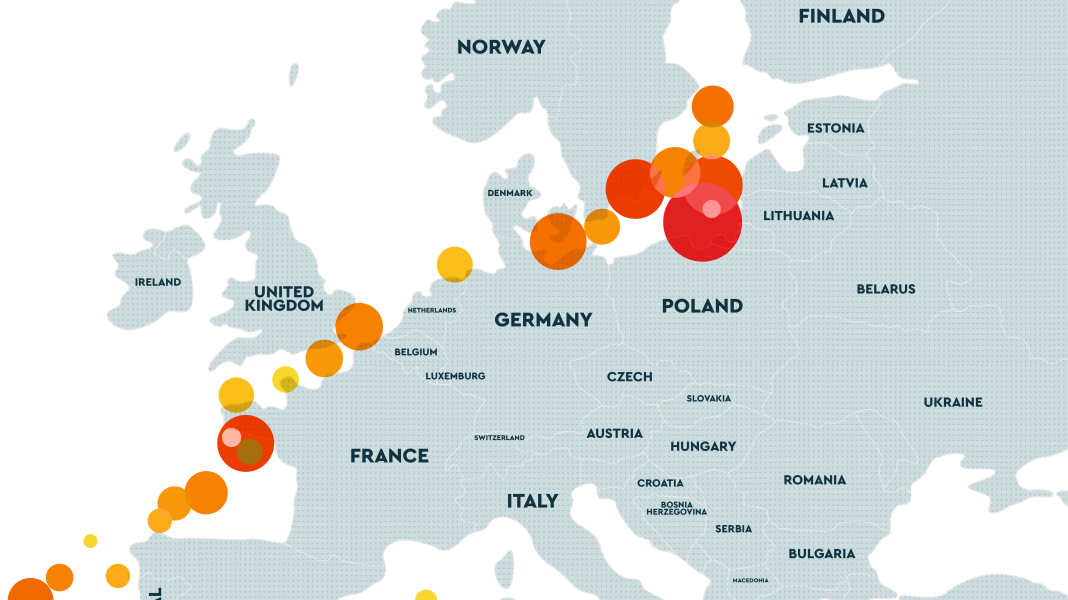
The Ocean Race has published results from the last Race Europe, in which three teams took water samples en route for a scientific study. They took 36 water samples on their way from the Baltic Sea to the western Mediterranean. All samples were found to contain microplastics in subsequent analyses by the Geomar Institute in Kiel, with the highest concentration of 430 particles per cubic metre being recorded in the Baltic Sea. The detailed study of the Ocean Race can be here can be viewed.
Although the average was lower at 230 particles per cubic metre, the Baltic Sea still proved to be the most polluted sea. Overall, things did not look good across Europe, with an average of 139 particles per cubic metre being found. 83 per cent of these were not small pieces of once larger plastic objects, but microfibres. These are found in functional clothing, in the abrasion of car tyres and probably also in rubbed-off antifoulings. The Ocean Race will expand the investigation in cooperation with the Geomar Research Institute in Kiel in 2022. "The fact that the majority of the particles are fibres was surprising. Until now, research has focused more on plastic fragments," says Dr Aaron Beck from Geomar. This shows how important the collaboration with partners such as the Ocean Race is.
The map above shows the individual results of the samples. There are more and more such collaborations between sailors and researchers; most recently, for example, sailors took research buoys with them on the Vendée Globe and deployed them far from the coast, taking samples over long periods of time and sending back data by radio. The aim was to analyse findings on changes in the oceans caused by climate change. In fact, researchers are also very interested in such collaborations, as the sailors sometimes reach waters that are not very often travelled to by research teams because such expeditions are time-consuming and very expensive.
A number of recent studies have shown that sediments on Baltic Sea beaches and the water are more contaminated with microplastics than researchers had expected. This is also confirmed by Dr Burkard Watermann from the Limnomar Research Institute. "Swedish and Danish studies on microplastics using towed filters recently showed that the Baltic Sea is more polluted than the North Sea. "Many microparticles also originate from shipping and fishing or are washed into the sea by rivers. If larger plastic objects are ground up further and further, they stay in the water for longer and the smallest pieces float better." The problem with the Baltic Sea is that it is a fairly closed inland sea, so the plastic remains in it for a long time. In the North Sea or Atlantic, a lot is carried along by the current and then ends up on the bottom or in the large rubbish swirls that now exist in almost every ocean.
It is also unpleasant that the latest research suggests that particles could also originate from antifoulings, which could come from the abrasion of self-eroding paints. However, according to Burkard Watermann, research in this area is still in its infancy.
